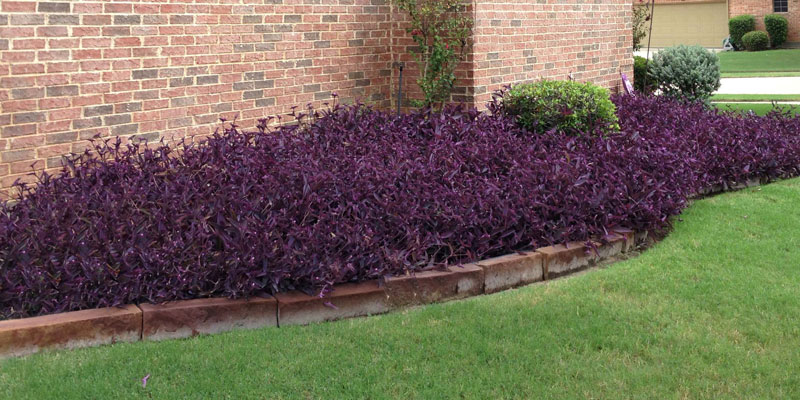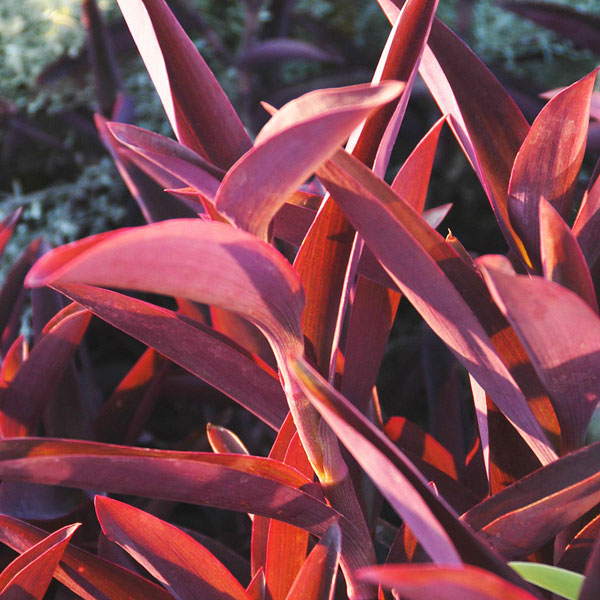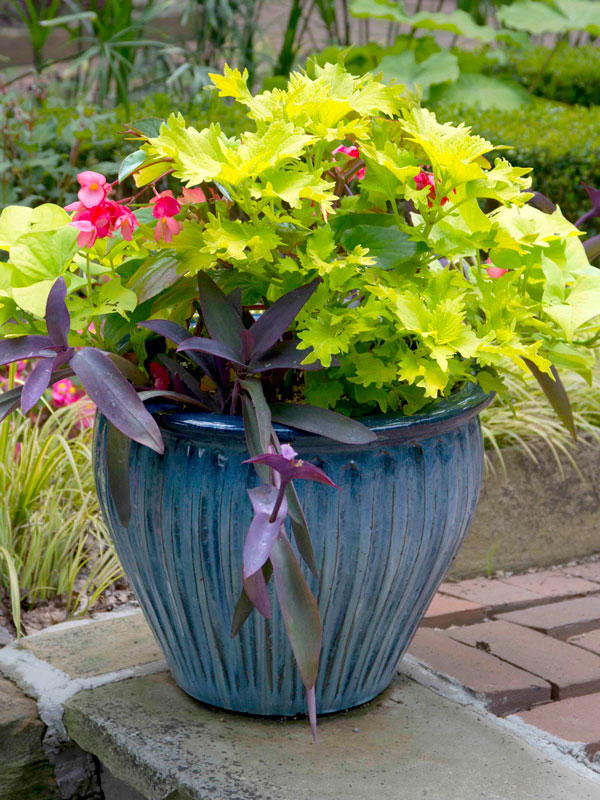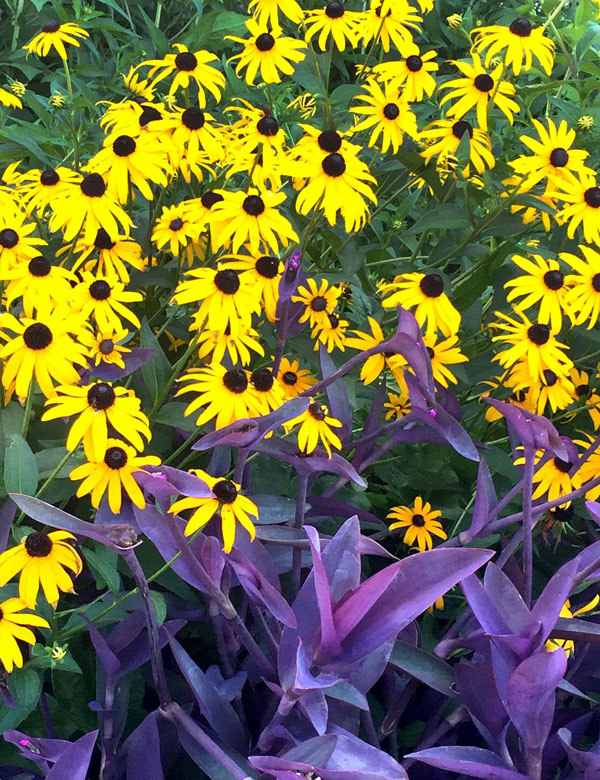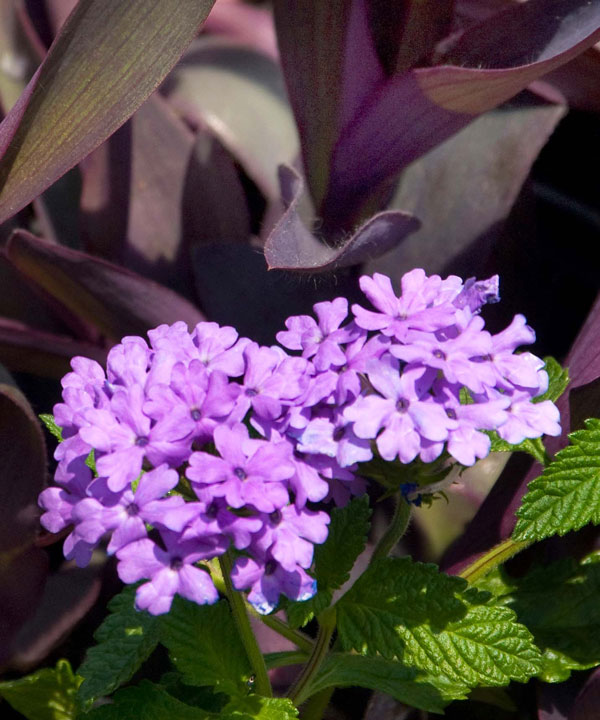Purpleheart is a true friend
When you meet this plant you wonder if it’s a sister to the many types of wandering Jews we commonly grow in pots and hanging baskets. Its growth habits are similar, as are its stems and leaves. They’re just bigger. But when it blooms you confirm the relationship.
What sets this one apart, however, is that it’s winter hardy in most parts of Texas. You can grow it out in the landscape. In South Texas it may not even freeze. From Central Texas north to the Red River and Panhandle, it will freeze to the ground, but it comes back vigorously the following spring.
Its path to fame…
I did a little research, and I found that purpleheart (Setcreasea pallida, now also referred to as Tradescantia pallida) is native to northeastern Mexico – the Gulf Coast region near Tamaulipas. It’s found there growing in sunny spots in well-draining soils. It’s a sprawling, ground-covering plant where the intense purple coloration protects it from sun and dehydration.
Horticulturists eager to bring plants from northern Mexico into Texas were probably responsible for its introduction into Texas. It propagates easily from cuttings, so it was nothing to pack away dozens and tote them back into the States.
Its popularity grew aided by horticulturists with Texas A&M, notably Dr. J.C. Raulston before he made the move to North Carolina State University in the late 1970s.
I first saw it used as a summer bedding plant in park beds in Arlington, then in medians in Allen. I’m sure it was already being used in San Antonio, Houston, and perhaps even burnt-orange Austin.
Does it have a place at your place?
Today you can use purpleheart in many ways. Here are a few…
• Groundcover. It handles heat and full sun, so it’s outstanding in xeriscape plantings. Use it with taller drought-tolerant plants like lantanas, Mexican bird of paradise, red yuccas, Gold Star Esperanzas, and others. The more sun it gets, the more intense its color will be.
• Border plant. Use it to edge drives, walks, and landscapes. It’s easily trimmed with a line edger to keep it in bounds.
• Container plantings. It becomes your “spiller” plant tumbling down over the sides of the pots.
• Accent plant in mixed color beds. Use it with contrasting plantings, for example against Goldsturm gloriosa daisies or trailing New Gold lantanas.
Planting and Care…
Plant purpleheart into highly organic garden soil that you’ve prepared with several inches of compost and sphagnum peat moss. Spring is the best time to plant it so the plants can become well rooted before frost. However, you could try taking cuttings for planting in the next several weeks.
Your purpleheart will grow best if it’s kept moist (not wet) at all times, and if you feed your plants with a high-nitrogen, water-soluble plant food. As the bed matures, subsequent years won’t require as many feedings. The plants will grow and perform beautifully if you’ll just keep them watered during the dry, stressful times.
And perhaps the best news of all is that purpleheart has no serious pest problems. I’ve grown it for decades and I’ve never seen an insect or disease on it.

